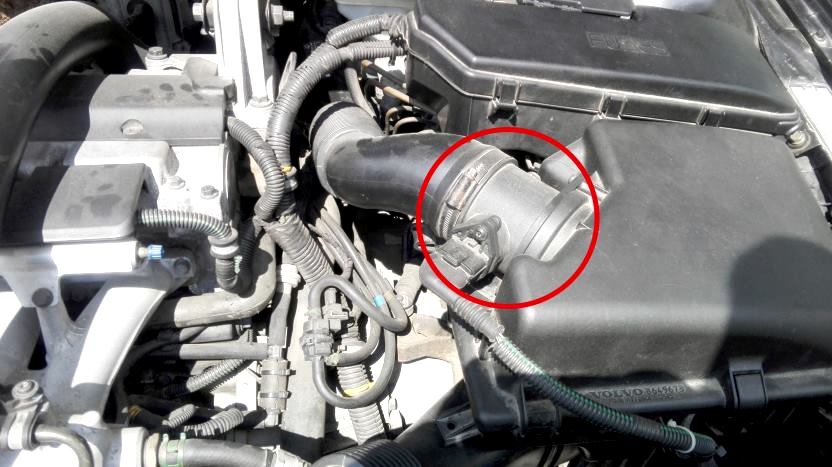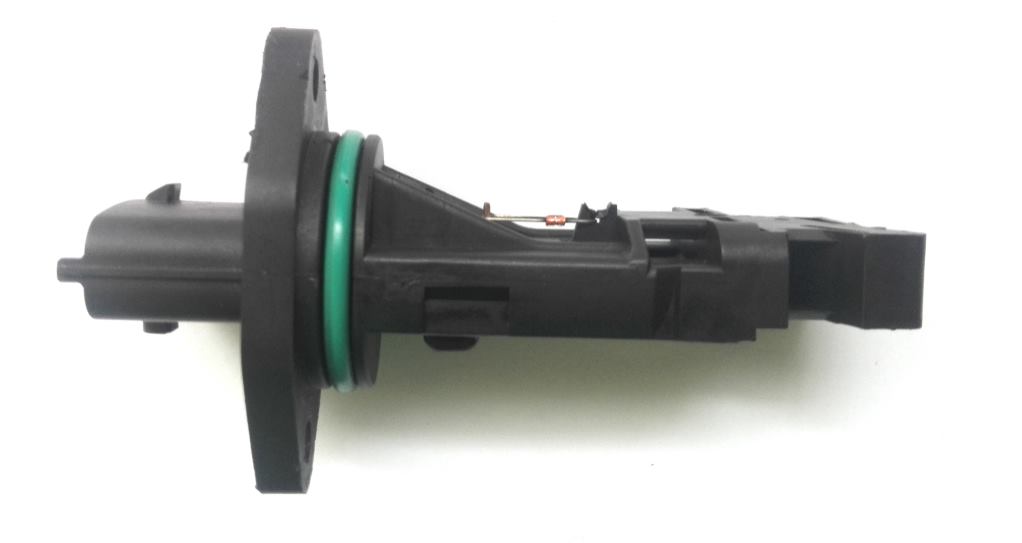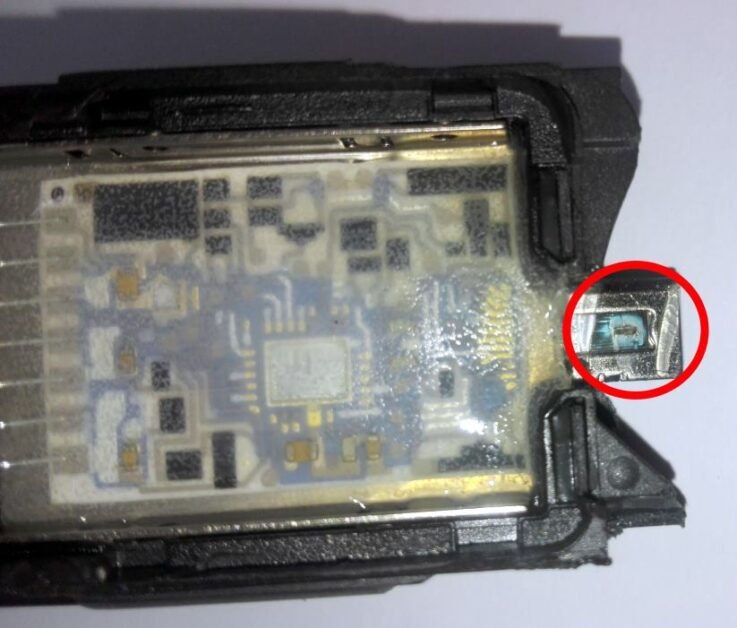Recently, I’ve been asked if it’s OK to drive with a bad mass air flow sensor and it got me thinking – why not put my degree in automotive electronics engineering to good use and share everything I know about mass air flow sensors?
So, that’s exactly what I’m going to do. In this article, we’ll talk mass air flow history, design, testing, cheap fixes, and will ultimately find out if you can drive with a bad mass air flow sensor; so make yourself comfortable – it’s going to be a long read.
Is Driving With a Bad Mass Air Flow Sensor Bad for Your Engine?
Driving with a bad mass air flow sensor is definitely bad for your engine, but if you’re going to drive short distances only, for example – back home or to your mechanic, then it probably won’t do any damage to your engine.
If the Engine Control Module detects that the mass air flow sensor has gone bad it will disregard its readings and use its backup strategy of preprogrammed default air flow values and other operational sensors – it’s called the Limp Home mode. The Limp Home mode is designed to reduce engine power and richen the air/fuel mixture in order to protect the engine from further damage.
If your car’s Engine Control Module doesn’t detect that the mass air flow sensor has gone bad, then driving with a bad mass air flow sensor will lead to additional problems. If the MAF sensor is underestimating air flow, the car will run lean and might overheat, burning out your catalytic converter and even burning a hole in a piston in the worst-case scenario. If the sensor is overestimating air flow, the car will run rich and plug the catalytic converter over time.
So, if your car runs better when you disconnect the MAF sensor, it might be a good idea to keep it disconnected and get the sensor cleaned or replaced ASAP.
What Is a Mass Air Flow Sensor and What Does It Do?
To put it simply, a mass air flow sensor (MAF) is an electronic sensor that gives your car the ability to measure the amount of air that is entering the engine. It’s one of the key components of a modern electronic fuel injection engine.
Up until the mass air flow sensor was invented, cars used carburetors that mainly utilized the Venturi effect to mix fuel with oxygen. As internal combustion engine technology improved and new exhaust emissions regulations were introduced, car manufacturers had to move away from the inefficient carburetors to an electronically controlled and a more precise way of powering an Internal Combustion engine – the electronic fuel injection.
The main benefit of electronic fuel injection is that now the car is able to have exact control over how much fuel is being injected at any given time, in turn increasing gas mileage (engine efficiency) and drastically reducing exhaust emissions. Basically, it allows to maintain the air-to-fuel mixture at a stoichiometric ratio of 14.7:1 – the ideal and most efficient combustion of the mixture.
Now, one of the key components of the electronic fuel injection system is the mass air flow sensor. It lets the Engine Control Module (ECM) to know the exact amount of fuel that is entering the combustion chamber at any given time. At the exhaust side of the engine, an o2 sensor checks the amount of leftover oxygen after the combustion process – this allows the ECM to compare both mass air flow and o2 sensor readings, and to calculate the precise amount of fuel that needs to be injected in order to keep the air-to-fuel mixture ratio at stoichiometric.
Where Is the Mass Air Flow Sensor Located?
The mass air flow sensor is one of the easiest components to access. It’s always located somewhere between the intake manifold and the air filter, and is most often placed just after the air filter box.

This is where the mass air flow sensor lives on a Volvo S60 – right after the intake air filter box.
How a Mass Air Flow Sensor Works
There are two main types of automotive mass air flow sensors – analog and digital. Both designs use a “hot wire”.
To clear any misconceptions: I won’t be covering the Vane air flow meter because it’s not a “mass” air flow sensor – it only measures the volume of air.
A mass air flow sensor contains a heated resistor (a hot wire) that is maintained at a predetermined temperature – usually a couple of hundred degrees.
This heated resistor is positioned in the center of the sensor’s housing or in an air flow sampling channel and is heated by the electrical current that the power feed is sending.
When the air flows across the heated resistor, it cools it down. The heated resistor is positive temperature coefficient, meaning that when it’s temperature drops, so does its resistance.
The drop in resistance allows more current to flow through the resistor in order to maintain the same temperature. This current is then changed into voltage and sent to the ECM where it’s converted into a digital signal (if the mass air flow sensor is analog) and interpreted as a measure of air flow grams per second.
Now, the hot wire is not enough to get an accurate mass air flow reading – you need to account for air temperature, since colder air is denser and vice versa. To do that, most mass air flow sensors have an additional “cold” air temperature sensor (thermistor) inside, which constantly monitors the temperature of the air flow. The thermistor is almost always a negative temperature coefficient type, meaning that its resistance goes up when the air temperature goes down. This is where the term “cold wire” mass air flow sensor comes from.

Some MAF sensors utilize a hot film instead of a hot wire. One side of the hot film is exposed to the cooling air flow, while the other is being heated and maintained at a constant temperature. Hot film sensors are digital and output a square wave PWM signal in the range of 30-150Hz. Their main advantage is longevity as they are less susceptible to contamination but on the other hand, they are almost impossible to clean.
Here are two types of mass air flow sensors:
Digital Mass Air Flow Sensor
Both mass air flow sensor designs work the same way but the digital mass air flow sensor has a few advantages over the analog one. It outputs a digital PWM signal, which less susceptible to interreference and can transmit data more accurately and reliably.
At first, the digital mass air flow sensor produces an analog signal, which gets immediately converted into a digital signal. This means that the ECM no longer needs an additional analog-to-digital converter – this saves precious processing power and makes the ECM cheaper to manufacture.
Analog Mass Air Flow Sensor
An analog mass air flow sensor is similar to the digital one – the main difference is that the analog MAF sensor doesn’t have an internal analog-to-digital converter, therefore the analog signal needs to be converted by the ECM. This sensor design is rarely used on newer cars and are more susceptible to interference.
Symptoms of a Bad Mass Air Flow Sensor & Why It Goes Bad
Generally speaking, mass air flow sensors (especially hot film design sensors) last a long time, however, the hot wire/hot film element is very delicate and any small amount of contamination on its surface could throw its readings off and cause engine problems.
The most common reason for a mass air flow sensor to go bad is the sensor hot wire/hot film surface contamination, commonly referred to as a dirty mass air flow sensor. The paper intake air filter in your car sometimes sheds small dust-like particles of itself that stick to surfaces and act as an insulator for the hot wire, which causes the MAF signal to be wrong at all conditions. In addition to that, gases and oil vapor from the PCV system also tend to stick to the sensor’s hot wire and throw its readings off.
These contaminants can insulate the hot wire or increase its surface area, making the mass air flow sensor underestimate and overestimate air flow. Because the ECM is no longer able to calculate the air flow correctly it miscalculates the amount of fuel that needs to be injected. This results in serious drivability issues and the following symptoms – check engine light, misfiring, no-start, poor acceleration, poor gas mileage, stalling, and reduced power.
How to Test a Bad Mass Air Flow Sensor
Before the mass air flow sensor goes really bad and while the engine is still running somewhat ok, it might be difficult to diagnose without a scan tool with live data or an oscilloscope.
Without Any Tools
If you don’t have a scan tool and you suspect that your mass air flow sensor is bad, remove it and give it a visual inspection. Most of the time, the mass air flow sensor is easily accessible and easily removed.
On the hand, if the engine is misfiring and having any other more serious drivability problems, unplugging the mass air flow sensor would make the car run much better since the ECM will be forced to use substituted values from its memory instead of false MAF sensor readings. Engine running better with the MAF disconnected is a good sign that the MAF sensor has gone bad, however, this test alone is not a 100% accurate way to tell if MAF is the only problem – it doesn’t account for a vacuum leak or a fuel delivery problem.

Photo by seafoam suds | (CC BY-SA 2.0)
In this picture, you can see one of the hot wires inside a sampling chamber. It looks dirty and there’s black residue on the surface – this is a perfect example of a bad and dirty mass air flow sensor. At this point, you should clean the mass air flow sensor and see if it fixed the problem.

Unfortunately, if your mass air flow sensor uses a hot film instead of a hot wire, cleaning rarely helps and is likely to cause further damage to the hot film – getting a new hot film MAF sensor is recommended.
Using Scan Tool Data
There are three ways you can test a mass air flow sensor using a scan tool:
Compare Known Good Readings at Wide Open Throttle
For this test, you need to get a hold of the known good MAF sensor readings (grams per second, voltage for the analog MAF sensor and frequency for the digital) at wide open throttle for your engine. The best places to look for known good readings are service manuals, Facebook groups and forums.
Once you have them, compare them to the readings of your MAF sensor. If your readings deviate far from the known good – clean your mass air flow sensor if it’s a hot wire type. If it’s a hot film sensor, you’re probably better off buying a new one.
Check the o2 Sensor at Wide Open Throttle
First, make sure that you’re o2 sensor is functional – it should be switching from rich and lean at idle.
At wide open throttle, the o2 sensor should be reading a RICH condition. If the O2 sensor is showing a LEAN condition at wide open throttle – that’s a classic dirty mass air flow sensor symptom (be aware that it can also indicate a fuel delivery problem).
Check the Long Term and Short Term Fuel Trim
A bad mass air flow sensor is going to have normal fuel trim numbers at idle and high at higher RPMs. If the opposite is happening (fuel trim numbers high at idle), then you’re looking at a possible vacuum leak.
In some cases, a dirty mass air flow sensor can over-estimate air flow at idle due to surface contamination increasing its surface area and cooling it down faster. In that case, the fuel trim would show negative numbers at idle.
Using an Oscilloscope
Back-probe the signal wire on your mass air flow sensor. Make sure you don’t damage the insulation of the wire.
Digital Mass Air Flow Sensor
Test the frequency of the signal at idle and wide open throttle. Compare the results with a known good. For example – 8.5kHz frequency on a newer GM is considered good and anything lower than that points to a dirty mass air flow sensor.
If there is no signal at all, it’s possible that the MAF sensor has failed completely. To make sure, verify that the power feed to the MAF sensor is at least 12V with ignition on and engine running. Lastly, do a voltage drop test on the MAF sensor ground – it should be less than 100mV.
Analog Mass Air Flow Sensor
If it’s an analog mass air flow sensor, check the peak voltage of the signal wire at wide open throttle. Again, compare the result to a known good. In most cases, a reading below 4V indicates a dirty mass air flow sensor.
If there is no voltage at all verify that the sensor has working power and grounds (there may be multiple grounds).
Can You Fix a Mass Air Flow Sensor by Cleaning It?
Yes, you can. Cleaning a hot wire mass air flow sensor does help most of the time but when it comes to a hot film design mass air flow sensor, it’s more of a hit-or-miss kind of situation in my experience. Spraying MAF cleaner is the best way but if you’re delicate enough and willing to take the risk, you can lightly wipe away surface contaminants on a hot wire design MAF sensor with a soft painter’s brush. As for the hot film sensor, you can only spray MAF cleaner into the chamber and hope for the best.
Can You Drive With a Bad Mass Air Flow Sensor?
Now that you’re up to speed with mass air flow sensors, here is the answer you were looking for – yes, you can drive with a bad mass air flow sensor.
The car’s ECM has a backup strategy, just in case the mass air flow sensor fails – it’s called the Limp Home mode. If the ECM has detected that the mass air flow sensor has gone bad, it will disregard its readings and calculate air flow from the data of other sensors that are functional, for example – Manifold Absolute Pressure (MAP) sensor, or use the default values from its memory, or use a combination of both.
Now, in some cases, the mass air flow sensor could send bad readings that are still correct enough for the ECM to not realize that the MAF is going bad. When that happens, the car will barely run and might even misfire. At this point unplugging the mass air flow sensor might be a good idea as it would force the ECM to use a backup strategy, which would disregard MAF readings and allow the engine to run much better.
By doing this, you’ll probably make your car drivable again and drive straight to your mechanic, however, it might not work on some cars as they don’t feature a good backup strategy for a failed mass air flow sensor (Subaru and Nissan). I’ve personally used the unplug-it trick to get back home once the mass air flow sensor in my Volvo has failed – the car ran OK and no damage was done to the engine.
Final Thoughts
To sum up – yes, you can definitely drive with a bad mass air flow sensor but it’s not healthy for your engine. It’s best to avoid driving with a bad mass air flow sensor especially since it’s easy to clean, easy to replace and not that expensive, but if you would continue driving with a bad MAF sensor, you will cause damage to your engine and your catalytic converter in the long run.
Resources:
Mass Air Sensors (MAF) – Automotive – Sensorland
Mass Air flow Sensor (MAF): how it works, symptoms, problems, testing – Samarins

Eddie is the co-founder of CarCareCamp.com, and the site’s primary contributor.
Under his belt, Eddie has a bachelor’s degree in Automotive Electronics Engineering and almost a decade of experience working as a semi-truck technician (specializing in electrics).
